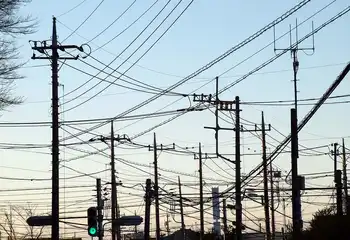DOE walks the walk with smart building
The Department of Energy, which runs the Golden-based lab nestled in the foothills west of Denver, and its contractors hope the $64 million structure will provide a national blueprint for making buildings greener and cutting energy use.
"Our hope is that it really starts to change the direction of society and the way we think of buildings," said Byron Haselden, president of Haselden Construction, the general contractor.
Achieving a zero-energy, "green" building is driving the 220,000-square-foot complex's design and construction.
"What typically happens is when a building gets designed, the architects design something and the engineers figure out how to build it, how to heat it and how to cool it," said Eric Telesmanich, project manager of NREL's infrastructure and development office.
In this case, engineers steered the design. Stantec Consulting started by studying what materials to use and how to orient the building. What emerged is a big "H" shaped structure with the two prongs on the west end closer to each other than on the east end. That configuration provides the best daylight and cuts the amount of electricity needed for lighting.
The connecting structure is the lobby, which will feature paneling made from pine trees killed by the bark beetle infestation in Colorado's central mountains. The wood also is used to fuel a heating plant on the campus.
Other features include natural ventilation, large windows to let in light and evaporative cooling. For comfort, no employee will be farther than 30 feet from windows, which are 6 feet wide and 7 to 9 feet long. The windows have a combination of glass and coatings to let in light while keeping unwanted heat out.
Transpired solar collectors — metal sheets with strategically cut holes designed by NREL — will pull air heated by the sun into the building on cold days.
In the basement, a labyrinth of concrete walls will capture the day's heat or the night's cool air to be slowly released upstairs. Engineers wrote a computer program to determine the labyrinth's size and shape and calculate air flow.
Exterior walls feature an insulated precast concrete panel system. Water will flow through piping in the floors to warm or cool the air. Recycled materials include reclaimed natural gas pipes as the columns to support the floors and walls.
And the building will let people know when it's a good day to open the windows or leave them closed, based on temperatures and historical climate information.
"There will be a little icon on your computer," Macey said. "It will tell occupants how the building is doing over the course of the year."
Once completed in June, the building will provide offices for 740 NREL employees. It's expected to use one-half to one-third the power of a similar-sized office structure.
The project's architects, engineers and contractors have an exacting client. NREL evaluates private-sector buildings for energy efficiency and is starting to track zero-energy buildings.
"It allows us to demonstrate what we can do with our technologies," said Jeffrey Baker, director of the office of laboratory operations at the DOE field office in Golden. "That's what this project is all about. This is walking the walk and shouting the talk."
NREL is documenting all work and will make that information public. Contractors working on the project insist that following NREL's example won't be too costly or cumbersome for the private sector, considering savings in energy costs over the life of the structure.
The roughly $280 per square foot construction cost is in line with comparable office buildings, said Philip Macey of RNL Design Inc., the project's designers.
"NREL and the design team should be commended for the vision and effort to go far beyond the minimum standards that many buildings are built to," said Gordon Holness, president of the American Society of Heating, Refrigerating and Air-Conditioning Engineers.
Holness' group sets many of the U.S. standards and guidelines to make construction more energy efficient and environmentally friendly.
The Department of Energy wants the complex to exceed by 50 percent the standard for energy efficiency used as a basis for building codes nationwide. Another goal is to earn the top rating — platinum — by the U.S. Green Building Council's Leadership in Energy and Environmental Design.
Related News

Electricity demand set to reduce if UK workforce self-isolates
LONDON - National Grid ESO is predicting a reduction in electricity demand in the case of the coronavirus spread prompting a lockdown across the country.
Its analysis shows the reduction in commercial and industrial use would outweigh an upsurge in domestic demand.
The prediction was included in an update from the Energy Networks Association (ENA), in which it sought to reassure the public that contingency plans are in place to ensure services are unaffected by the coronavirus spread.
The body, which represents the UK's electricity and gas network companies, said "robust measures" had been put in place to protect control rooms and contact…




